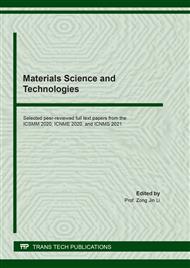p.167
p.174
p.185
p.190
p.196
p.201
p.205
p.211
p.218
Sustainable Reinforced Concrete Design of Structural Walls
Abstract:
Sustainability calls for reduction in the use of natural resources and man-made materials. In light of this, the present study demonstrates the potentials of the reduction of transverse reinforcement in structural walls. A structural wall 1.7 m long was designed following the Greek Code for Reinforced Concrete (GCRC). This wall was then constructed and tested under cyclic loading. The theoretical value of the uncracked stiffness was four times greater than the value calculated after the experiment. The wall was also designed according to the Compressive Force Path method (CFP), which allowed for a significant reduction in the transverse reinforcement for the same target values.
Info:
Periodical:
Pages:
218-222
Citation:
Online since:
July 2021
Keywords:
Price:
Сopyright:
© 2021 Trans Tech Publications Ltd. All Rights Reserved
Share:
Citation:


